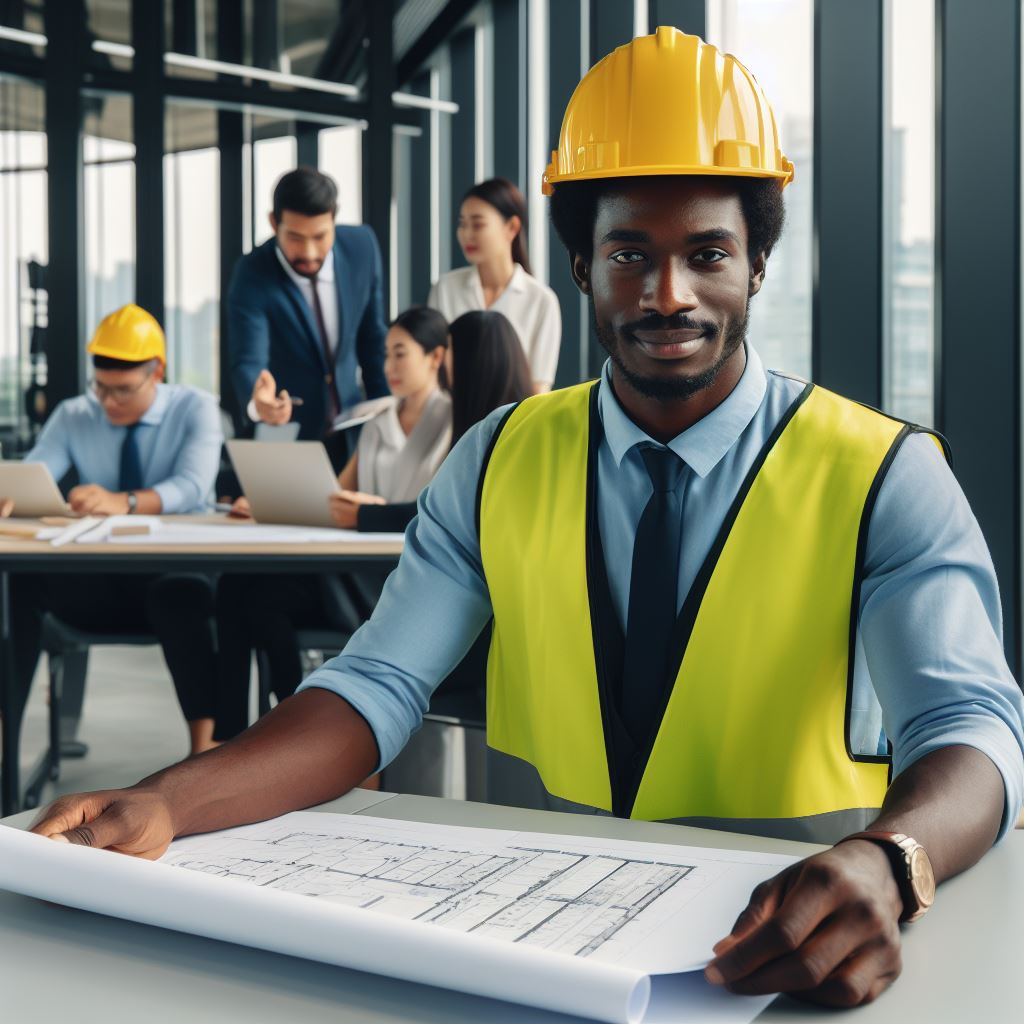Introduction
Local Building Codes Impact on US Architecture.
Local building codes are the unsung heroes of US architecture, silently shaping our skylines and neighborhoods.
These regulations define everything from structural safety to aesthetic considerations, profoundly influencing the nation’s architectural landscape.
Overview of the blog post content
- Architectural Constraints: Explore how local building codes influence architectural design and functionality.
- Safety First: Discuss the paramount role of codes in ensuring structural integrity and public safety.
- Aesthetics and Identity: Delve into how codes balance aesthetics with cultural and regional identities.
- Sustainability and Innovation: Discover the role of codes in promoting eco-friendly and cutting-edge architectural practices.
- Challenges and Adaptations: Examine the evolving challenges architects face in meeting code requirements and the need for flexibility.
As we journey through this post, you’ll gain a profound appreciation for the invisible hand that guides American architecture.
Understanding Local Building Codes
Definition and Purpose of Local Building Codes
Local building codes are regulations set by local governments to ensure the safety, health, and welfare of the public through proper construction practices.
Variations in Building Codes across Different Regions in the US
- Geographic Factors: Building codes differ based on climate, seismic zones, and flood-prone areas.
- Historical and Cultural Influences: Certain regions have unique architectural styles and requirements.
- Population Density: Urban areas often have stricter building codes to ensure safety and prevent overcrowding.
- Administrative Differences: The process for code development and enforcement may vary from state to state or city to city.
- Economic Considerations: Building codes can address energy efficiency, aiming to reduce long-term costs for individuals and the community.
- Political Factors: Building regulations can be influenced by local politics, community input, and lobbying efforts.
Understanding these variations is crucial for architects, builders, and developers working across different regions.
Building codes protect against hazards such as structural failures, fire risks, and unsanitary conditions.
Safety requirements cover aspects like building materials, electrical systems, plumbing, and fire protection.
Codes also address accessibility for individuals with disabilities, ensuring equal opportunities and usability.
Compliance is essential, as failure to meet codes can result in fines, delays, or even legal action.
Role of Local Authorities in Creating and Enforcing Building Codes
Local authorities play a proactive role in code enforcement by conducting inspections during construction.
Violations can lead to stop-work orders, mandatory corrections, or even the demolition of unsafe structures.
While compliance is essential, building codes can sometimes pose challenges for architects and design professionals.
Striking a balance between creative design and code requirements can be a delicate process.
Creative solutions, such as utilizing innovative materials or sustainable design techniques, can help meet both aesthetic and code goals.
Architects must remain current with evolving codes and stay informed about proposed changes in their jurisdiction.
Engaging with the local authority and participating in code development processes can influence positive changes.
In fact, local building codes are crucial for maintaining public safety and welfare.
They reflect regional variations, are created and enforced by local authorities, and often require a balance between creativity and compliance.
By understanding and actively engaging in the development and implementation of building codes, architects can help shape a safer and more sustainable built environment.
Historical Overview of US Architecture and Building Codes
In this section, we will provide a historical overview of US architecture and building codes, highlighting significant architectural styles in different periods, describing how building codes have evolved over time to adapt to new architectural trends, and discussing the impact of major events or disasters on shaping building codes.
Transform Your Career Today
Unlock a personalized career strategy that drives real results. Get tailored advice and a roadmap designed just for you.
Start NowSignificant Architectural Styles in Different Periods
- Colonial Period: Characterized by simple, symmetrical designs influenced by European traditions.
- Neoclassical Period: Inspired by ancient Greek and Roman architecture, featuring grandiose facades and classical motifs.
- Gothic Revival Period: Popular in the 19th century, emphasizing pointed arches, stained glass, and ornate detailing.
- Modernist Period: Emerging in the mid-20th century, embracing simplicity, functionality, and the extensive use of glass and steel.
- Postmodern Period: Reaction against modernism, incorporating eclectic styles, historical references, and bold designs.
Evolution of Building Codes to Adapt to New Architectural Trends
Building codes have continuously evolved to keep pace with changing architectural trends and address emerging safety concerns.
In the early stages, architectural styles largely influenced building practices, with minimal standardized regulations.
However, as cities grew and industrialization brought new construction materials and techniques, the need for regulatory control became apparent.
The establishment of comprehensive building codes began in the late 19th century.
These codes focused primarily on fire safety and structural stability.
However, with the rise of modernist architecture and its departure from traditional building methods, codes had to adapt to accommodate innovative designs and materials.
Standards for electrical and mechanical systems, accessibility, and energy efficiency were gradually introduced.
Impact of Major Events or Disasters on Shaping Building Codes
Major events or disasters have often acted as catalysts for strengthening building codes and regulations.
The Great Chicago Fire of 1871, for instance, led to the adoption of stricter fire prevention measures, including the use of non-combustible materials and the implementation of fire-resistant construction techniques.
Similarly, the 1994 Northridge earthquake in California highlighted the need for seismic-resistant designs, leading to significant updates in building codes for earthquake-prone areas.
Hurricane Andrew in 1992 resulted in significant improvements to wind-resistance standards in coastal regions.
More recently, the 9/11 terrorist attacks prompted the inclusion of stricter security measures, such as the implementation of blast-resistant designs and improved evacuation protocols in high-rise buildings.
In short, the evolution of US architecture and building codes showcases the ever-changing landscape of design principles, safety concerns, and regulatory measures.
From colonial simplicity to postmodern eclecticism, each architectural style reflects the cultural, social, and technological factors prevalent in its era.
Building codes, in turn, have adapted to accommodate new trends and address safety issues influenced by major events and disasters.
By continuously evolving, building codes ensure both the aesthetic appeal and structural integrity of the built environment.
Read: Architectural Education: Top US Schools to Consider
The Influence of Local Building Codes on Architectural Design
How building codes impact the design process
- Building codes play a crucial role in shaping architectural design.
- Architects must adhere to specific regulations and guidelines set by local building codes.
- These codes cover various aspects such as structural stability, fire safety, and accessibility.
- Design decisions must consider how they align with the requirements outlined in the building codes.
- For example, the maximum height of a building may be determined by the local building code.
- Codes also influence the use of materials, energy efficiency standards, and environmental considerations.
- Architects need to stay updated on the latest building code revisions to ensure compliance.
Examples where building codes have driven innovative architectural solutions
- Building codes can inspire architects to think creatively and find innovative solutions.
- In areas prone to earthquakes, codes require buildings to be designed with seismic resistance.
- Architects have developed techniques such as base isolation and flexible structural systems to meet these requirements.
- Green building codes have spurred the integration of sustainable design elements like solar panels and rainwater harvesting systems.
- Codes promoting accessibility have led to the creation of inclusive architectural designs, benefiting people with disabilities.
Challenges faced by architects due to rigid or outdated building codes
- Rigid building codes can limit architectural creativity and hinder innovation.
- Outdated codes may not reflect current technological advancements or changing societal needs.
- Architects may face difficulties in incorporating new materials or construction techniques due to stringent codes.
- Adhering to outdated codes can make it harder to meet energy efficiency or sustainability goals.
- Obtaining building permits may become time-consuming and expensive if codes are overly complex or bureaucratic.
- Architects often advocate for periodic code updates to ensure they align with contemporary design practices.
- Collaboration between architects, policymakers, and code officials is essential for creating balanced and effective building codes.
In general, local building codes have a profound impact on architectural design.
They shape the design process, drive innovation, and pose challenges to architects.
While strict or outdated building codes can limit creativity, they also serve as important safety measures.
Efforts to update and improve building codes should aim to balance between regulatory requirements and design flexibility.
Collaboration and dialogue between all stakeholders are crucial for creating codes that promote both safety and architectural excellence.
Read: Iconic US Buildings and the Architects Behind Them.

Balancing Safety and Creativity in Architecture
Importance of Building Codes in Ensuring Public Safety
- Building codes play a crucial role in safeguarding the lives and well-being of the general public.
- Compliance with building codes ensures that structures are designed and constructed to withstand potential hazards.
- Building codes establish standards for structural integrity, fire safety, electrical installations, and accessibility.
- By enforcing these codes, local governments ensure that buildings are safe for occupants and visitors.
- Building codes also address environmental concerns such as energy efficiency and sustainability.
- Without building codes, there would be a higher risk of structural failures, fire outbreaks, and other disasters.
- Building codes provide a sense of assurance to the public, instilling confidence in the safety of built environments.
Conflicts Between Building Codes and Innovative Architectural Designs
- While building codes prioritize safety, they can sometimes hinder innovative architectural designs.
- Creative architects often push boundaries, seeking unique and unconventional solutions.
- Certain building codes may restrict the use of innovative materials or unconventional building techniques.
- Codes designed for standard buildings may struggle to adapt to the complexities of innovative designs.
- Conflict arises when architects feel constrained by rigid codes that limit their creative freedom.
- Innovative designs may require exemptions or alternative compliance methods to fulfill safety requirements.
- Balancing safety and innovation requires finding common ground between architectural vision and code compliance.
Strategies to Strike a Balance Between Safety Requirements and Creative Freedom
- Collaboration between architects and building code officials can foster a better understanding of design intentions.
- Regular dialogue ensures that safety concerns are addressed while allowing for creative expression.
- Early involvement of code officials in the design process can prevent conflicts and delays later.
- Encouraging innovation-friendly codes that incorporate flexibility without compromising safety is crucial.
- Periodic code updates and revisions should consider advancements in materials, construction techniques, and design trends.
- Recognizing and rewarding exceptional designs that successfully meet safety requirements can promote innovation.
- Architectural education should emphasize the importance of safety and code compliance alongside design principles.
- Professional organizations can serve as platforms to discuss best practices for balancing safety and creativity.
In essence, building codes are essential to ensure public safety; however, conflicts between codes and innovative designs are inevitable.
By promoting collaboration, flexibility, and continuous improvement, architects and code officials can strike a balance between safety requirements and creative freedom, resulting in harmonious and innovative architectural solutions.
Read: Challenges & Triumphs: Women Architects in the USA
Economic and Environmental Implications of Building Codes
Economic costs associated with compliance to building codes
- Building codes require architects and contractors to build structures that meet certain standards.
- Compliance with building codes often increases construction costs due to the need for additional materials or specialized equipment.
- The cost of obtaining permits and conducting inspections during the construction process can also add to the overall expenses.
- However, these economic costs are necessary to ensure the safety and longevity of the built environment.
- By adhering to building codes, potential risks and hazards can be minimized, ultimately reducing future repair and maintenance costs.
- Additionally, compliance with building codes creates a sense of trust and confidence among buyers and investors.
- Knowing that a building meets the required safety standards can increase its market value and attract potential occupants.
How building codes can promote sustainable architecture and energy efficiency
- Building codes have evolved to address the growing concerns of environmental sustainability and energy efficiency.
- They now include provisions and requirements for green building practices, such as the use of renewable materials and energy-efficient systems.
- By mandating sustainable design and construction practices, building codes contribute to reducing carbon emissions and conserving natural resources.
- For instance, energy codes establish minimum requirements for insulation, lighting, and HVAC systems, leading to reduced energy consumption.
- Sustainable architecture and energy-efficient designs can result in long-term savings on energy bills for building owners and occupants.
- Green building practices also contribute to creating healthier indoor environments by improving air quality and reducing water usage.
- Moreover, complying with building codes related to sustainability can qualify buildings for various certifications, increasing their marketability.
Long-term benefits of adhering to building codes for both individuals and communities
- Adhering to building codes ensures that structures are built to withstand natural disasters, enhancing the safety of individuals and communities.
- Compliance with building codes leads to improved structural integrity, reducing the risk of collapses or damage during earthquakes or hurricanes.
- It also promotes accessibility, making buildings safer and more inclusive for individuals with disabilities.
- Building codes help create aesthetically pleasing and functional spaces, contributing to the overall livability and quality of life in communities.
- By enforcing building codes, communities can avoid the need for costly renovations or reconstructions in the future.
- Adhering to building codes contributes to the preservation of historical and cultural heritage, protecting important architectural landmarks.
- In summary, building codes ensure the safety, sustainability, and resilience of the built environment, benefiting both individuals and communities in the long run.
Overall, building codes carry both economic and environmental implications.
While they may increase construction costs in the short term, compliance ensures the safety, durability, and energy efficiency of structures.
Building codes also foster the adoption of sustainable architecture practices, leading to a reduced environmental impact and long-term economic benefits for individuals and communities.
Read: US Green Building Trends: Architects Leading the Way.
Uncover the Details: Key Licensing & Certifications for U.S. Electrical Engineers
Find Out More: Continuous Learning: Professional Development for U.S. Mech Engineers
Challenges and Potential Solutions in Building Code Implementation
Building codes play a crucial role in shaping the architecture of the United States.
They ensure the safety, functionality, and sustainability of structures.
However, implementing and enforcing these codes can be a challenging task for both governing bodies and industry professionals.
In this section, we will explore the common challenges faced in building code implementation and discuss potential solutions that can help overcome these obstacles.
Transform Your Career Today
Unlock a personalized career strategy that drives real results. Get tailored advice and a roadmap designed just for you.
Start NowCommon challenges faced during the implementation and enforcement of building codes
- Lack of awareness and understanding: One of the major challenges is the lack of awareness and understanding of building codes among architects and builders.
Many professionals are not up-to-date with the latest code requirements, leading to non-compliance. - Resistance to change: Resistance to change is another hurdle in effective code implementation.
Architects and builders who are accustomed to old practices may find it difficult to adapt to new regulations, making it harder to implement the updated codes. - Limited resources and expertise: The implementation and enforcement of building codes require sufficient resources and expertise.
However, many local jurisdictions struggle with limited staff and funding, hindering their ability to effectively enforce the codes.
The role of technology and digital tools in simplifying compliance procedures
- Building Information Modeling (BIM): BIM technology can streamline the compliance process by integrating building codes directly into the design phase.
This allows architects to have real-time feedback, ensuring code compliance throughout the project. - Digital permit processing: Technology can enable online permit processing, reducing paperwork and simplifying the application process.
This not only saves time but also improves the accuracy and efficiency of building code compliance. - Code compliance software: The use of specialized software can simplify compliance procedures by automating code checking and flagging potential violations.
This reduces the chances of human error and facilitates greater adherence to building codes.
Ways to improve the transparency and accessibility of building codes to architects and builders
- Clear and concise documentation: Building codes should be written in a language that is easily understood by architects and builders.
Complex jargon and convoluted sentences should be avoided to enhance accessibility. - Online code libraries: Creating online platforms where architects and builders can access the latest building codes and relevant resources can improve transparency and accessibility.
This ensures everyone has access to accurate and up-to-date information. - Regular code training and education: Providing regular training and educational resources on building codes can enhance awareness and understanding among industry professionals.
Continuing education programs can help architects and builders stay updated with new codes and regulations.
In review, building code implementation faces various challenges, ranging from lack of awareness to limited resources.
However, the integration of technology through BIM, digital tools, and online resources can simplify compliance procedures.
Enhancing the transparency and accessibility of building codes through clear documentation and education can further improve compliance rates.
Overcoming these challenges and implementing building codes effectively is integral for the development of safe and sustainable architecture in the United States.
See Related Content: Engineering Technician Career Growth and Development
Explore Further: Nuclear Engineering in the Military: Opportunities and Challenges
Find Out More: Importance of Data Ethics in Data Science
Conclusion
Throughout this blog post, we’ve explored how local building codes are integral to US architecture.
We’ve seen how these codes enhance safety, sustainability, and accessibility in our built environment.
Moreover, they stimulate creativity and innovation by setting the boundaries within which architects and designers operate.
Local building codes are the foundation upon which our architectural masterpieces stand.
They safeguard our communities, protect our environment, and influence the aesthetic and functional aspects of our structures.
Without these codes, architecture as we know it would lack the principles that guide its evolution.
Engage in the ongoing dialogue about building codes.
Your insights and opinions matter, as they contribute to the evolution of codes and, consequently, the shape of our cities.
Be part of the journey towards a more sustainable, safe, and aesthetically pleasing built environment.




